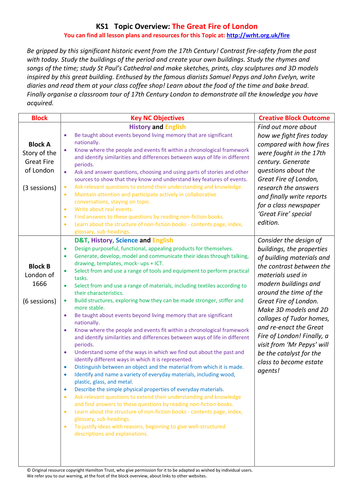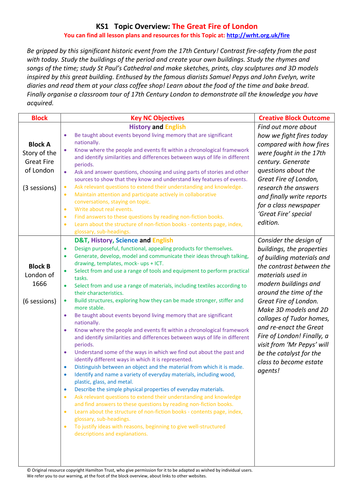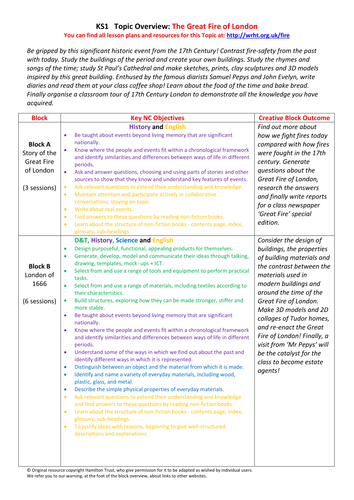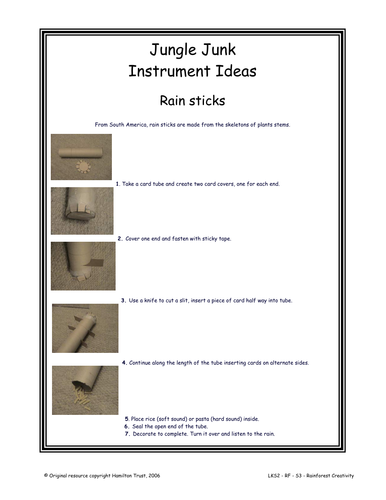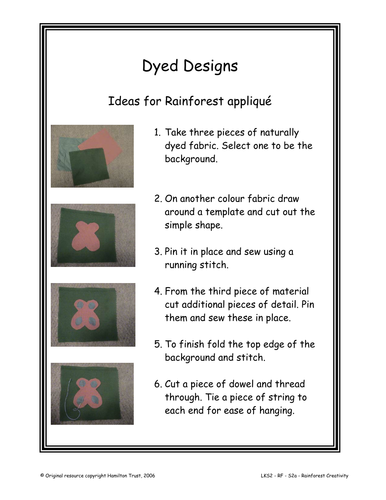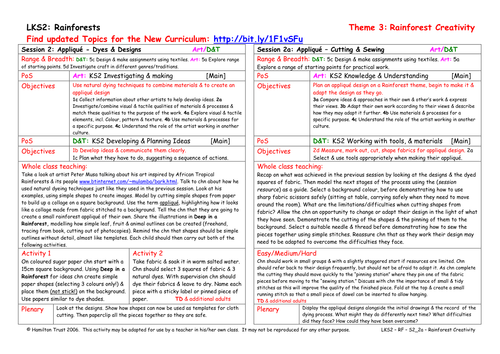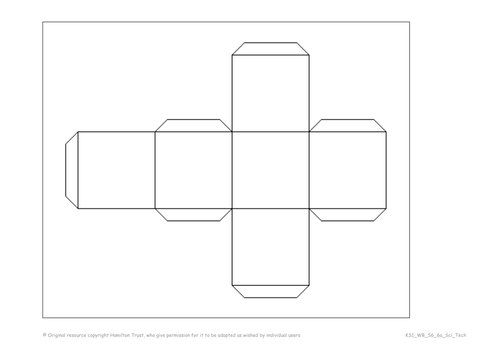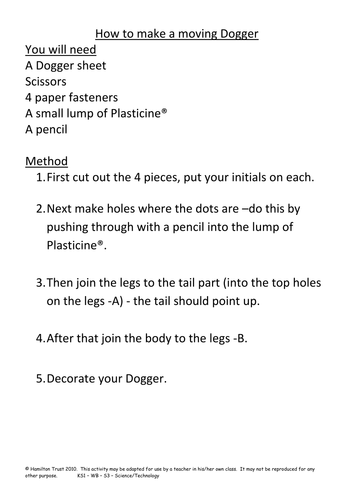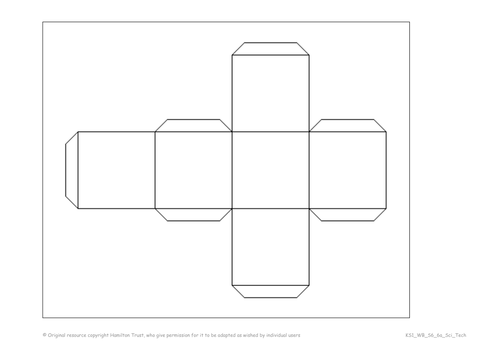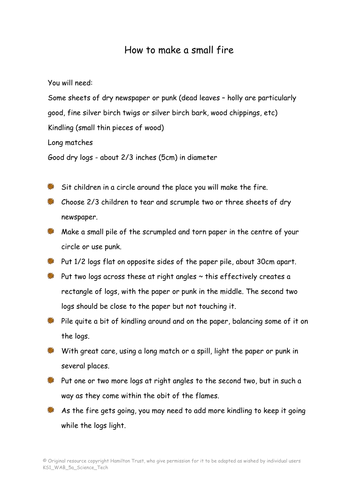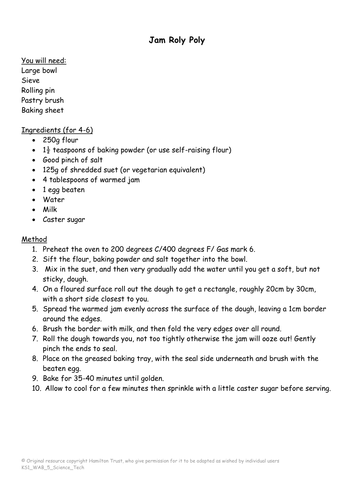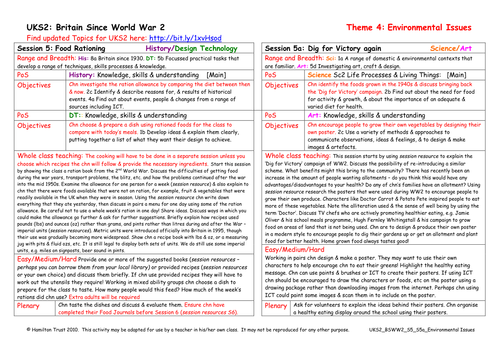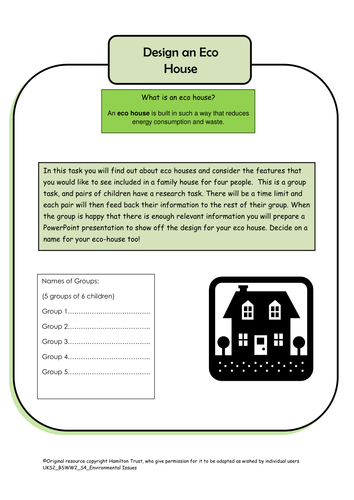
3k+Uploads
10009k+Views
11617k+Downloads
Design, engineering and technology

Dinosaurs and Fossils - Dinosaur DIY - Upper Key Stage 2
Be a palaeontologist! Research key features of dinosaurs and how they are adapted to their environment; design your own dinosaur perfectly adapted to either the Triassic, Jurassic or Cretaceous period; create the structure, cover and paint your dinosaur model; finally, contribute to an ‘I Spy Dinosaurs’ class book and share your knowledge with other children.
Includes:
- Topic Overview
- Block Overview
- Lesson 01: Dino DIY - planning
Research key features of dinosaurs and then design a dinosaur perfectly adapted to either the Triassic, Jurassic or Cretaceous period.
- Lesson 02: Dino DIY - making
Working from a design plan, create the structure of your dinosaur.
- Lesson 03: Dino DIY - painting
Research skin colours and textures of modern living things and apply your knowledge to create the most suitable surface for your dinosaur model.
- Lesson 04: 'I spy' a DIY Dino
Contribute to a class ‘ I Spy’ dinosaur book with photographs, list of characteristics and possible ‘footprints’.
Find more lesson plans and resources at www. hamilton-trust.org.uk.

Dinosaurs and Fossils - Fossils and Rocks - Upper Key Stage 2
Be a palaeontologist! Excavate a fossil block and research the three main epochs of fossils. Find out how fossils are made and make your own. Tour your school sharing your knowledge with other children.
Includes:
- Topic Overview
- Block Overview
- Lesson 01: Being palaeontologists
Try your hand at being a palaeontologist by excavating a fossil block, generating questions about fossils and starting a dino-dictionary.
- Lesson 02: Fossils and the Timeline
Develop your palaeontologist expertise; research the three main epochs of fossils and put them on a timeline.
- Lesson 03: How are fossils formed?
Find out how fossils were made and make your own clay mould fossil, an ‘amber’ resin fossil and your own Dino-poo fossil.
- Lesson 04: Visit to a Natural History Museum
Experience fossils at first hand in a Natural History Museum; study them in detail and make drawings.
- Lesson 05: Palaeontologists on tour
Share your palaeontologist expertise with other children by taking your learning on tour.
Find more lesson plans and resources at www. hamilton-trust.org.uk.

The Great Fire of London - Visit 17th Century London - Key Stage 1
Be gripped by this significant historic event from the 17th Century!
Prepare tours for key London places, make souvenirs, role-play key people and draw maps, ready to transform your classroom into a recreation of 17th Century London at the time of the 1666 Great Fire. Become tour guides and teach visitors about this historic event.
Includes:
- Topic Overview
- Block Overview
- Lesson 01: The Great Fire of London Tour
Prepare a tour guide speech to inform visitors to 17th Century London about the key places that were involved in the Great Fire.
- Lesson 02: The Great Fire of London Souvenirs
Design and create Great Fire of London souvenirs, using your knowledge of the event.
- Lesson 03: Table top maps
Create informative tabletop maps of 17th Century London, using your knowledge of the event and your imagination.
- Lesson 04: Guided tours of 17th century London
Using all you have learned about the Great Fire of London, turn your classroom into a recreation of 17th Century London. Guide visitors around key places of the time, tell them about this historic event and then invite them to choose a souvenir.
Find more lesson plans and resources at www. hamilton-trust.org.uk.

The Great Fire of London - Bakery - Key Stage 1
Be gripped by this significant historic event from the 17th Century!
Learn about the food eaten at the time and contrast the diet of the rich and poor. Compare and contrast contemporary and period recipes and produce them for the end of topic exhibition. Study the Great Fire monument in London and build your own structure to symbolize this historic event.
Includes:
- Topic Overview
- Block Overview
- Lesson 01: Banquets and Picnics
Children can choose to be either ‘Royalty’ or ‘Peasants’ to compare and contrast the food we eat today with the food available in Tudor and Stuart times.
- Lesson 02: Bakers!
Children will bake two different types of bread, taste, compare and contrast them and decide which one should be produced for the end of topic exhibition. Children will also design and build a model structure to symbolize the importance of the Great Fire of London.
Find more lesson plans and resources at www. hamilton-trust.org.uk.

The Great Fire of London - St Paul's Cathedral - Key Stage 1
Be gripped by this significant historic event from the 17th Century!
Develop your ideas about this famous cathedral using drawing, imagination and communication; use charcoal drawing and potato printing to develop artistic ideas inspired by St Paul’s before designing, making and decorating a final model Cathedral.
Includes:
- Topic Overview
- Block Overview
- Lesson 01: Journey Back in Time
Find out about St Paul’s Cathedral and then develop your own ideas in charcoal pictures.
- Lesson 02: The Dome
Research St Paul’s further using paintings and sculptures and use clay to make your own 3D artefacts.
- Lesson 03: Abstract Art
Think about the way fire looks and the way it makes people feel. Empathise with the people who lived through the Great Fire and make your own piece of abstract art using potato printing.
- Lesson 04: Designing and making a cathedral
Consolidate all your knowledge about St Paul’s cathedral by planning, making and decorating your own junk model cathedral.
Find more lesson plans and resources at www. hamilton-trust.org.uk.

The Great Fire of London - London of 1666 - Key Stage 1
Be gripped by this significant historic event from the 17th Century!
Consider the design of buildings, the properties of building materials and the contrast between the materials used in modern buildings and around the time of the Great Fire of London. Make 3D models and 2D collages of Tudor homes, and re-enact the Great Fire of London! Finally, a visit from ‘Mr Pepys’ will be the catalyst for the class to become Stuart estate agents!
Includes:
- Topic Overview
- Block Overview
- Lesson 01: Fantasy buildings & Resource
Discuss the properties of ideal buildings, including function and materials (this is an ideal opportunity to plan a visit from an Architect).
- Lesson 02: Building materials
Learn about the properties of materials used in modern building construction, including around the exterior of the school.
- Lesson 03: Builders then and now (part 1)
Compare and contrast building materials available today and 450 years ago using research and practical tasks.
- Lesson 04: Builders then and now (part 2)
Evaluate the stability of Tudor buildings by creating 3D models, 2D collages and labelled diagrams and making wattle and daub.
- Lesson 05: London's burning!
Create a model Tudor street and consider the effects of it burning down.
- Lesson 06: Estate Agents
Write Tudor property descriptions, using historical knowledge, and present them in role to ‘Mr Pepys’.
Find more lesson plans and resources at www. hamilton-trust.org.uk.

Everyday Materials - Materials Matter - Year 2
Explore the useful properties of materials with a range of investigations involving absorbency and flexibility. Discover which type of kitchen towel or cloth is most effective at mopping up spills; consider why building materials must be absorbent and which ones fit the bill; create artwork by exploring the textures of materials and learn all about wax and how to re-mould it.
Includes 6 session plans & resources:
01 - Mopping up
02 - Are bricks absorbant?
03- Waterproofing materials
04 - Printing
05 - Resist the wax!
06 - Melting and moulding
Hamilton’s science scheme uses hands-on investigative science activities to promote a deep understanding of scientific concepts and help children develop effective methods of scientific enquiry. Our scheme is fresh, original and free!

Headdress to Impress!
The Kayapo Indians who live in the Rainforests of Brazil are famous for their ceremonial headdresses. In this session children use the internet to study their designs before creating their own to wear in the classroom.

Jungle Junk
Listen to the Rhythm of the Rainforest in this session! Children start by studying the Baka people who live in the African Rainforests, looking in detail at their instruments. Children then create simple instruments of their own using junk modelling techniques.

Appliqué – Cutting & Sewing
In this session children complete their Appliqué by cutting and sewing the pieces of their design before proudly displaying it in the classroom. They take time to reflect on the whole dyeing and designing process and evaluate the finished product.

Appliqué - Dyes & Designs
Amazing Amazonian Appliqué! Children use the work of an artist inspired by the rainforest and Deep in a Rainforest as a starting point for some art work of their own. They create simple designs and dye their fabric nature’s way in this session.

Make A Box
Moving on from the last session, children explore how boxes are made from nets by taking apart packaging boxes. Then using a pre-prepared net, children make and design their own boxes.

Make a Moving Dogger
Practise cutting and joining skills by making a moving Dogger. This session links to English Plan 2 Stories with familiar settings. Learn how to cut well, make a hole in cardboard and construct moving joins using paper fasteners.

Design a Box
In this session, children explore packaging and why we need it. They discuss which materials are better for the environment and go on to design their own packaging, taking this into account.
Hamilton’s cross-curricular topics provide extensive planning resources to facilitate teaching a range of subjects under specific historical, geographic or thematic umbrellas.

Cooking Food on an Open Fire
Immediately after the war many people cooked on open fires using wood, which was cheap or easy to gather free. Cook some potatoes on an open fire outside for children to taste with butter or cheese. If possible allow children to toast some marshmallows with adults.

Grow Your Own
Children compare a food journal they have kept with a food pyramid which gives the recommended servings of different food groups. The need to include fruit and vegetables is highlighted and children design a garden to grow their own.

Cooking A 1950's Meal
Children have the opportunity to cook one course of a typical 1950s meal or to set the table. Discuss safety measures before children cook the shepherds’ pie, rice pudding or sponge pudding and custard. Will everyone have a taste of all three dishes?

Food Rationing
During the 1940 and 50s food was rationed. Discuss the ration allowance then and compare it with what you eat now. In groups and using suggested books or resource examples children will choose and cook a ration recipe for everyone to taste. Was our diet better then?

Design An Eco House
Children consider the elements that they would like to see in an eco house. Children work in groups to research alternative energy sources, insulation, building materials etc. The groups prepare a presentation to show their designs to the rest of the class.
Hamilton’s cross-curricular topics provide extensive planning resources to facilitate teaching a range of subjects under specific historical, geographic or thematic umbrellas.

Energy
This session we consider how we are using up fossil fuels. How did we heat our homes and cook in the past? Discuss renewable energy and any local schemes to try and use more renewable energy. Challenge children to make a solar oven and cook something with it!




